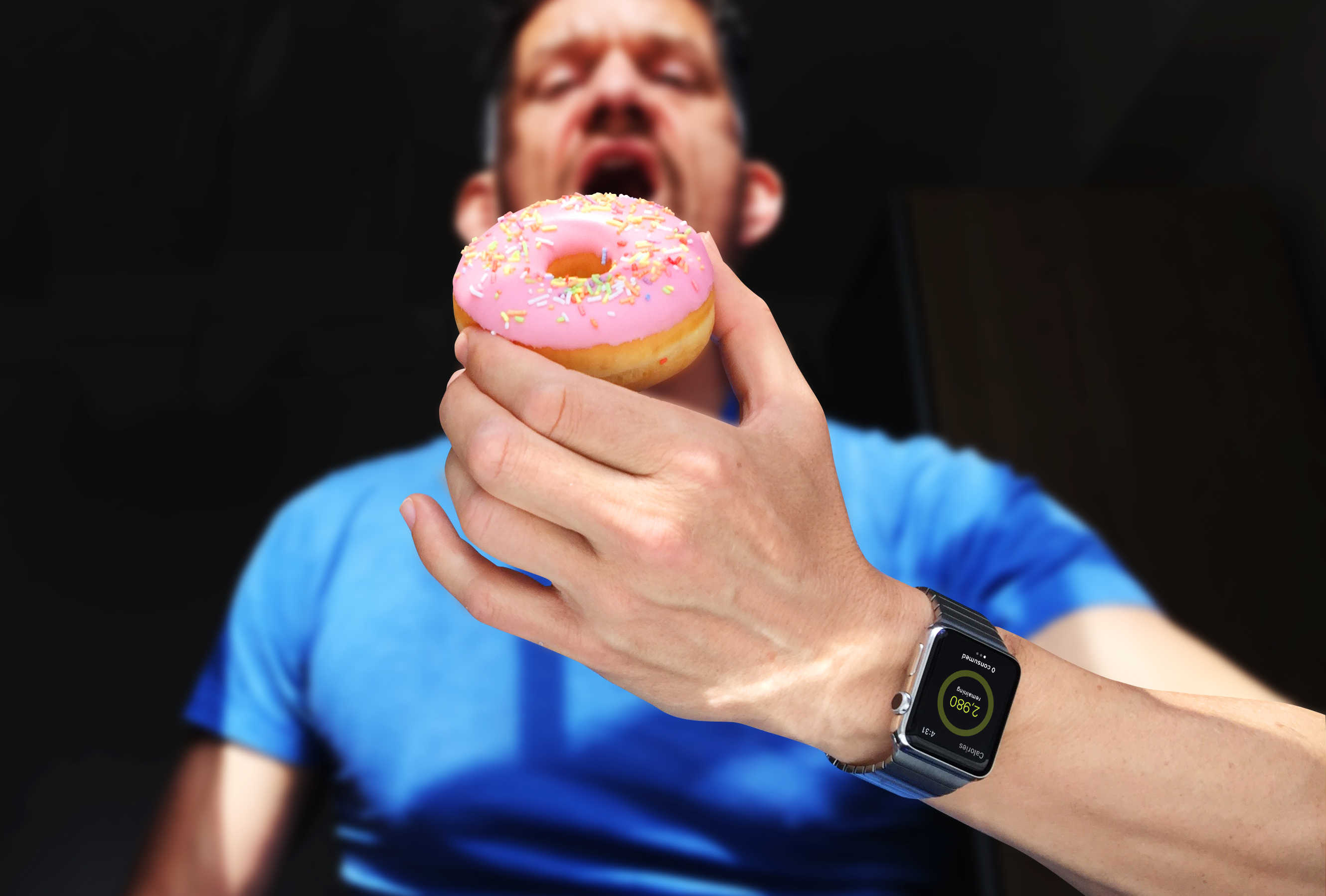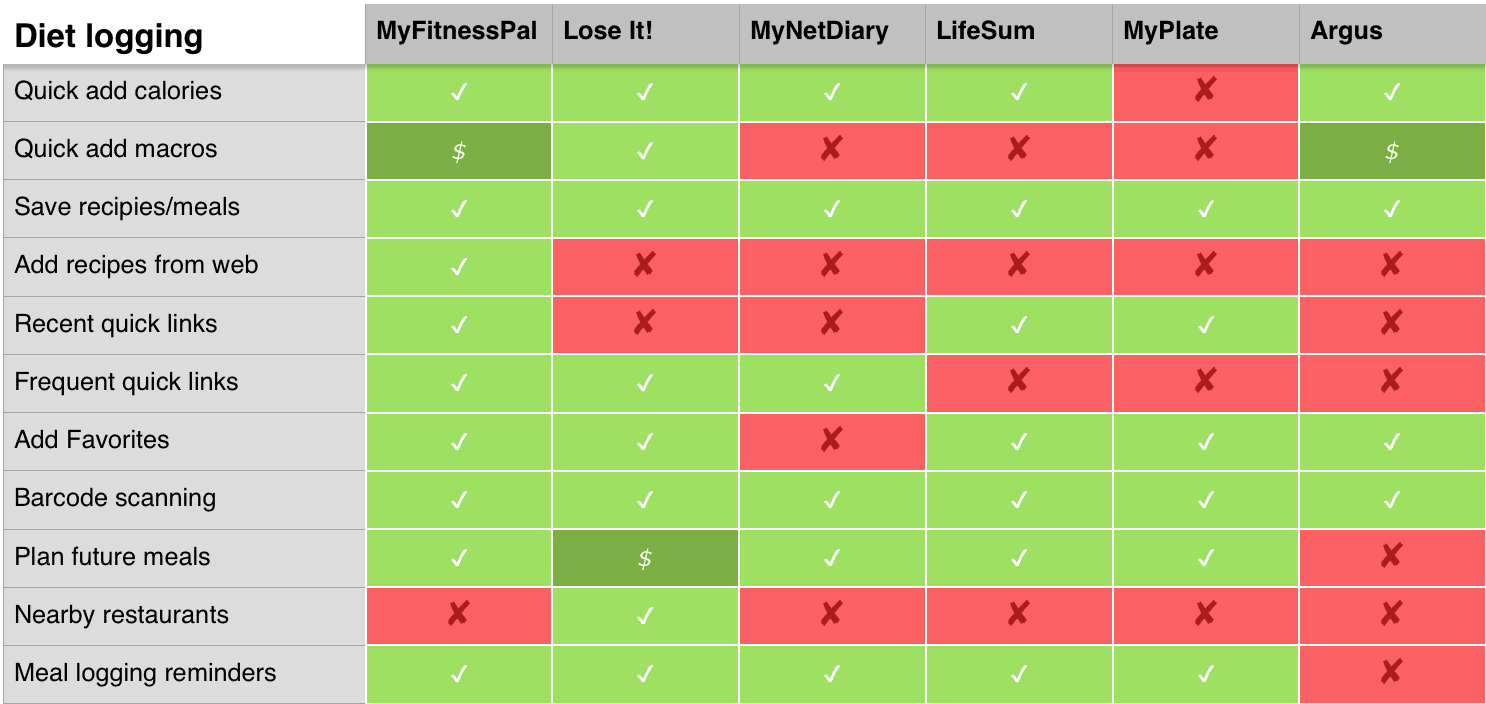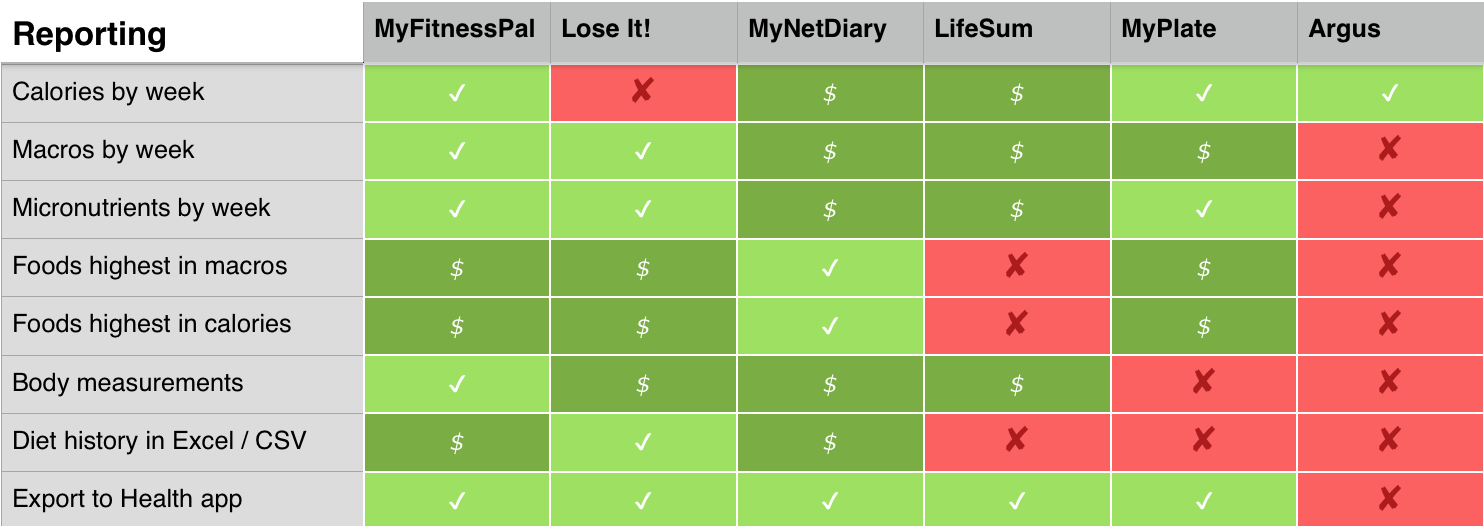Calorie-tracking apps like MyFitnessPal and MyNetDiary are no fun to use. Logging all your meals is a tedious chore, and unlike fitness apps that praise you for your hard work, diet apps tend to just tell you off for eating too much.
But when you are trying to lose or gain weight, these apps provide indispensable insights into where your calories are coming from and how you can optimize your diet to get the best results. So I’ve compared the leading calorie trackers to find out which one you should count on.
Calorie trackers: A dietician in your pocket
Getting a complete nutritional breakdown of your diet used to be a costly process, involving dietitians laboriously looking up nutrient breakdowns in arcane publications. But these days, thanks to modern smartphones, anyone can do it. All you need is a calorie-tracking app, which can scan barcodes using your phone’s built-in camera and tell you exactly what is in the food you find at the supermarket.
That’s the theory, anyway. In practice, things are a bit more complicated. Logging every single thing you eat, down to the last peanut, requires a lot of patience and scrupulous honesty. Every moment of weakness must be logged. Even that sneaky tub of Ben & Jerry’s you secretly scarfed by yourself last week.
Personally, I don’t use calorie-tracking apps all the time — it isn’t necessary for me, since I usually eat the same things every week, and I therefore know roughly how many calories I’m eating. But whenever I make changes to my diet, I find it is useful to log what I’m eating for a week or so, just to make sure I’m eating the right amount of the right things.
Rating calorie-tracking apps

Photo: Graham Bower/Cult of Mac
I’ve tried a variety of calorie trackers over the years, and although they all do fundamentally the same thing, I’ve found they vary widely in terms of accuracy and ease of use. Some harness much bigger databases of food than others, which saves a lot of time you would otherwise spend entering details manually. Others focus on logging exercise or providing motivational support.
For this review, I’ve taken a look at six of the most popular diet trackers: MyFitnessPal, MyNetDiary, Lose It!, LifeSum, MyPlate and Argus. I’ve compared them on a variety of criteria, including database quality, ease of logging, and quality of reporting. While they all have strengths and weaknesses, one clear winner emerged.
Freemium costs and advertisements

Like most apps these days, all the trackers I reviewed are freemium apps: Basic features are free, and you can unlock premium features for a monthly or annual subscription. Premium prices range from $30 to $60 a year and provide a good guide to quality, with fully featured apps charging the most.
It was nice to see that several of the free apps contained no ads, and even those apps that did feature ads kept them relatively discreet.
In the comparison charts below, I have indicated premium-only features in darker green with a dollar sign.
Food database size and accuracy

Oddly, MyFitnessPal makes contradictory claims on its App Store listing about the number of foods in its database, stating that it contains 5 million items initially, then later claiming it is actually 6 million. Similarly, Lose It! claims on their App Store listing that they have over 1 million entries on their database, but a company representative told me that this figure is out of date and it is now more like 7 million.
Short of counting every item in these apps, it’s not possible to verify their database size, but clearly the more items the better, since it saves time you would otherwise have to spend in entering data. Popular calorie-tracking apps have the benefit of many more users adding items — and many more eyes to check and correct errors.
I found a few occasional inaccuracies, especially outside the United States. In Sweden, when I scanned my Starbucks honey & granola yogurt with MyFitnessPal, the estimate was off by 200 calories. But Lose It! did not do much better, mistaking the item for a strawberry yoghurt.
Prime directive: diet logging

The less hassle involved in logging what you eat, the more likely you are to do it right. That’s why it is so important for app developers to make logging as simple as possible.
MyFitnessPal enjoys a clear lead in this area, with many nice time-saving features, including a handy list of recent items to choose from. One amazing innovation the app offers is the ability to automatically harvest all the nutrition information from a recipe on a web page. This is unique, and a genuine time-saver. I have absolutely no idea how MyFitnessPal does it — it seems like magic. You pop in the URL, and MyFitnessPal does the rest.
A special mention here should also go to Lose It!, which has its own unique time-saving feature in the form of using your location to automatically spot nearby restaurants and provide you with their menus. Currently, this seems to be limited to the likes of Starbucks and McDonald’s, but it is nonetheless useful if you frequent such establishments.
Exercise logging

Most diet apps make some attempt to offer exercise-logging features. The idea is that you can offset calories from the food you have eaten by keeping track of the extra calories you burn during exercise. So, for example, if you go on a nice long run, you may burn enough calories to eat a nice tasty bun.
In practice, it is not that simple. Counting calories burned from exercise can provide only a rough guide — they are not measured accurately enough to add and subtract precisely.
As such, I don’t see much benefit to diet apps logging exercise (although you may say I’m biased because I co-created an exercise app). Even calorie-tracking apps that do attempt to log exercise seem half-hearted about it. Most apps don’t bother with logging the weight you lift in strength exercises, for example, while LifeSum and MyNetDiary bizarrely attempt to log exercises such as bench presses by duration rather than reps.
Argus offers by far the best exercise logging, with a fully illustrated strength-training exercise database.
Goal-setting features

Every app I tested helps you set a goal when you start using it. While most people use calorie trackers to lose weight, some may want to put on pounds if, for example, they are athletes attempting to build more muscle or they have been advised by their doctor that they are underweight.
One app I tested did not support weight-gain goals, although given that it is called “Lose It!,” perhaps I should not have been surprised. When I entered a weight-gain goal in the app, it incorrectly labeled the info a “weight maintenance goal.”
MyFitnessPal offers some particularly clever options in its goals, allowing for cheat days and setting calorie goals for individual meals. Another round to MyFitnessPal.
Stats and reporting tools

The whole point of logging calories is to gain useful insights about your diet. So perhaps it is no wonder that this is where the app developers start to raise their paywalls. While most offer some rudimentary stats free of charge, to get the really good stuff — like which foods you commonly eat that contain the most calories, or the ability to see aggregated stats beyond the day-by-day view — you’re going to have to pony up for premium features.
MyFitnessPal and MyNetDiary stand out as offering the most comprehensive suite of reporting tools, which may explain how they justify charging so much more than their competitors.
Social features

To some extent, social features may seem unwanted in a diet app. After all, it’s one thing to brag about your fabulous life on Facebook. It’s quite another to confess to a bunch of dieting do-gooders that you ate an entire packet of Oreos last night. But that kind of social pressure, combined with friendly support, can help keep you motivated.
Most apps offered similar features in this area, with message boards being a popular option. LifeSum and MyPlate stood out as being the most anti-social of the group, offering fairly limited community options.
Apple Watch apps

Initially, I was not convinced there would be much value in having a calorie-tracking app on your wrist. But I was very impressed by what MyNetDiary has achieved in this area. While MyFitnessPal has limited its Apple Watch app to a featureless and extraneous dashboard, MyNetDiary has managed to pack almost its entire app onto the wearable’s screen. Admittedly, it looks a bit jammed-in, with small text, buttons and icons. But it turns out to be surprisingly easy to log calories with MyNetDiary using the Apple Watch’s built-in voice recognition.
LifeSum bizarrely attempts to solve wrist-based diet logging by giving you the choice between generic small, medium and large meals. It then logs generic calorie info — presumably based on averages. But this seems so inaccurate, it is not worth the bother.
With the exception of MyPlate, all the apps were designed for watchOS 2, which means they are native apps, although they still require the iPhone to be in range in order to log items to the database.
Conclusion: the best calorie-tracking app

Aside from the disappointing limitations in its Apple Watch app, MyFitnessPal is a clear winner across the board. Its comprehensive database, combined with ease of data entry and insightful reports, put it way ahead of the competition. It’s not the cheapest option, but it’s not the most expensive either. If you are serious about logging your calorie consumption, I think $49.99 for an annual subscription is money well spent.
Update: This post has been updated to properly reflect current features of Lose It! We’ve revised its database size, and noted its step counting is a free feature. It turns out that it does include user-added foods, free CSV data export, and strength training — So this gives it three extra points, putting Lose It! in second place.


